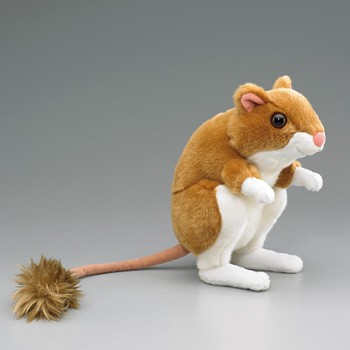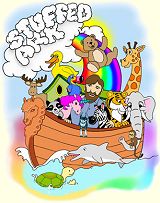 |
Stuffed Plush
Kangaroo Rat
From the Wildlife Artists. Floppy plush designed with meticulous attention to detail.
8
Inches Tall
The closest thing
to the real thing.
Wildlife
Artists Stuffed Plush
Kangaroo Rat
WLPLT2750RK
$16.50
Sold Out
Discontinued
7 Mar 09
|
|
Kangaroo rats are
found in arid and semi-arid areas of Canada, the United States and
Mexico that retain some grass or other vegetation. Their diet includes
seeds, leaves, stems, buds, some fruit, and insects. Most kangaroo rat
species use their burrows and buried caches nearby to store food against
the possibility of bad seasons. The Banner-tailed Kangaroo Rat has been
recorded making burrows with several storage chambers up to 25 cm in
diameter each, and containing almost six kilograms of stored food.
One special feature of the
kangaroo rat is the animal's efficient kidneys. The kangaroo rat has a
longer loop of Henle in the nephrons which permit a greater magnitude of
countercurrent multiplication and thus a larger medullary vertical
osmotic gradient. As a result, these rodents can produce urine that is
concentrated up to an osmolarity of almost 6,000 mosm/liter, which is
five times more concentrated than maximally concentrated human urine at
1,200 mosm/liter. Because of this tremendous concentration ability,
kangaroo rats never have to drink; the H2O produced
metabolically within their cells during oxidation of foodstuff (food
plus O2 yields CO2 + H2O + energy) is
sufficient for their body. Kangaroo rats lose so little water that they
can recover 90% of the loss by using metabolic water gaining the
remaining 10% from the small amount of water in their diet. Kangaroo
rats lose water mainly by evaporation during gas exchange and gain water
mainly from cellular metabolism.
From
Wikipedia, the free encyclopedia |

